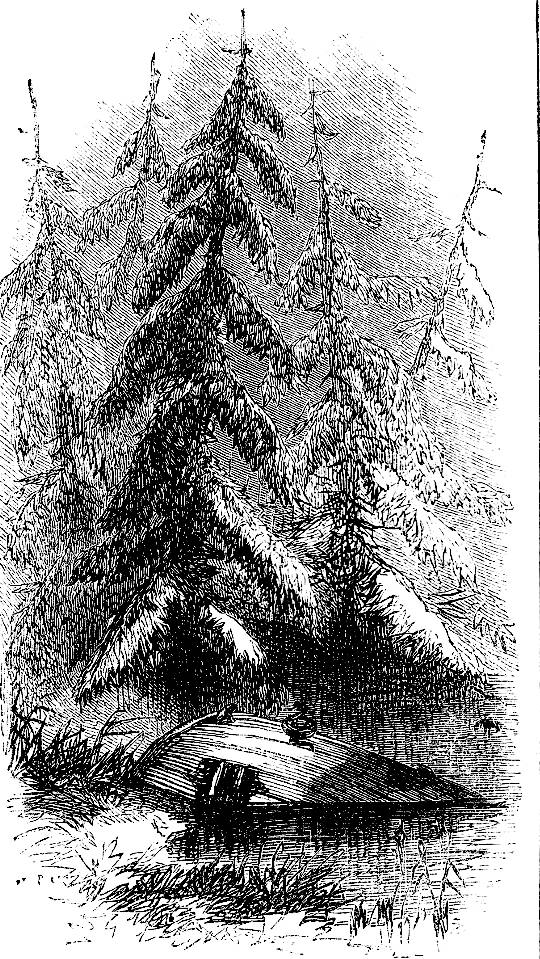A derelict boat in Blackwater lake.
John McLenan
11 February 1860
10.2 cm high by 5.4 cm wide (4 by 2 ⅛ inches), framed, p. 85.
Tenth headnote vignette for Collins's The Woman in White: A Novel (1860).
As Marian begins her exploration of the grounds of the Blackwater Park estate the morning after her arrival, on 28 July 1850 she emerges from a close plantation of firs to discover the lake below her. Returning by her former path to the heath nearer the house, she encounters a wooden shed or boat-house. As she sits to catch her breath, she hears a sobbing breath underneath her. Under her rude seat she discovers a feeble black and white spaniel, who is the subject of this instalment’s chief illustration for incidents on 28 July.
Scanned image and text by Philip V. Allingham.
